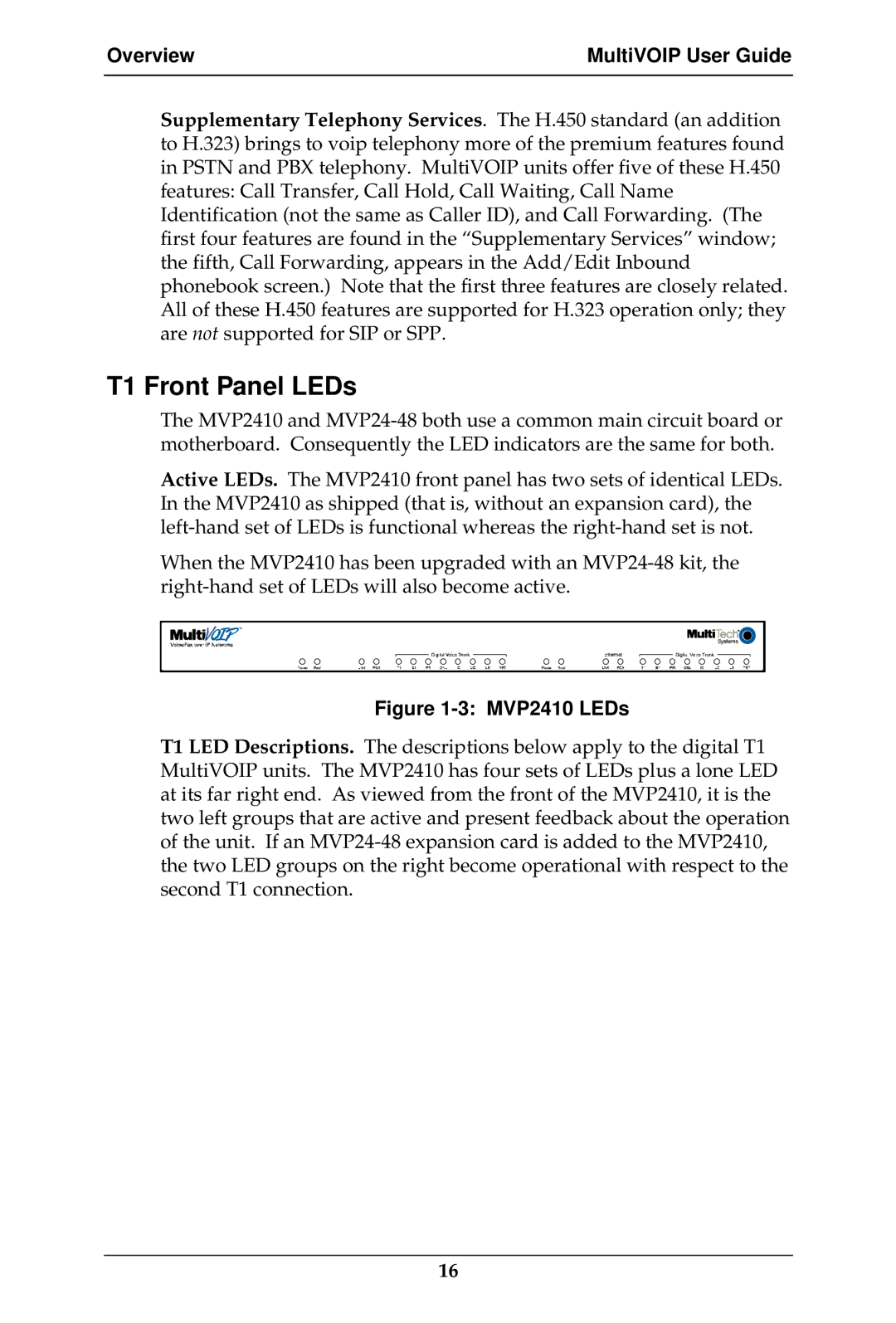
Overview | MultiVOIP User Guide |
|
|
Supplementary Telephony Services. The H.450 standard (an addition to H.323) brings to voip telephony more of the premium features found in PSTN and PBX telephony. MultiVOIP units offer five of these H.450 features: Call Transfer, Call Hold, Call Waiting, Call Name Identification (not the same as Caller ID), and Call Forwarding. (The first four features are found in the “Supplementary Services” window; the fifth, Call Forwarding, appears in the Add/Edit Inbound phonebook screen.) Note that the first three features are closely related. All of these H.450 features are supported for H.323 operation only; they are not supported for SIP or SPP.
T1 Front Panel LEDs
The MVP2410 and
Active LEDs. The MVP2410 front panel has two sets of identical LEDs. In the MVP2410 as shipped (that is, without an expansion card), the
When the MVP2410 has been upgraded with an
Figure 1-3: MVP2410 LEDs
T1 LED Descriptions. The descriptions below apply to the digital T1 MultiVOIP units. The MVP2410 has four sets of LEDs plus a lone LED at its far right end. As viewed from the front of the MVP2410, it is the two left groups that are active and present feedback about the operation of the unit. If an
16
